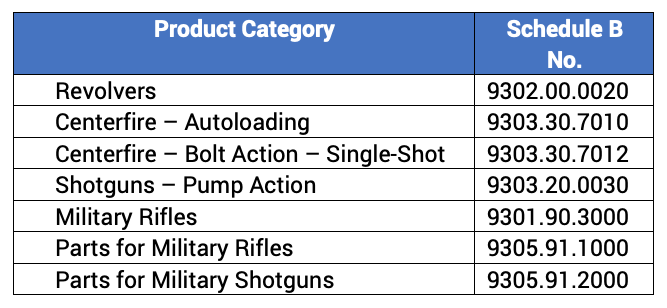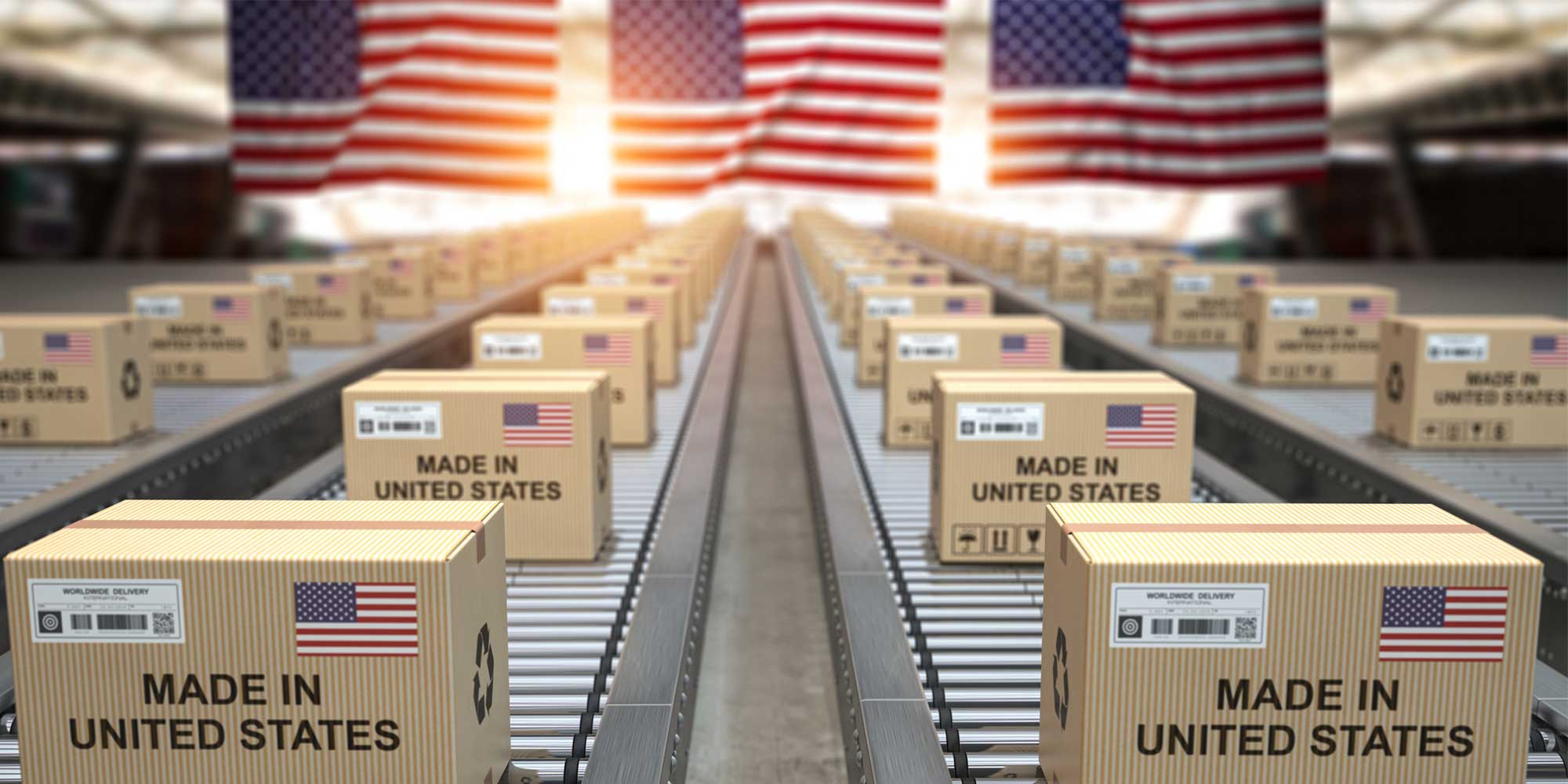We have discovered some issues with the U.S. Government export stats for Canada.
If you read or use our reports, please read this column. The Canadian issues are significant. We expect to resolve them, but, until then, you will want to understand them to give proper weight to our reports.
– The Problem
In EasyExport Insights, we report on exports of 22 categories of firearms and related products. The data we use is published monthly by the U.S. Census Bureau.
We recently discovered that the Census Bureau data does not include exports to Canada in seven of the product categories we track. Not only that, the data that is not included in those seven categories appears in other categories, inflating the exports to Canada in those categories.
The seven product categories that include exports to every country except Canada, and the associated Schedule B numbers, are:

Let’s look at revolvers to see the impact. The table showing the top 25 export markets for revolvers (page 8 of this issue) doesn’t include statistics for Canada. Canada may well be the number one market for revolvers exported from the United States but, whatever, the actual volume of exports is, the published data says it’s zero. No exports of revolvers at all to Canada, according to the published data.
We think, but aren’t yet certain, that revolvers are lumped in with pistols, thereby artificially inflating the volume of pistols exported to Canada (see page 7).
So, the published data understates U.S. exports of revolvers to Canada and overstates U.S. exports of another category, probably pistols.
Revolvers are just one example. A similar phenomenon is occurring with each of the other six categories.
 – How Could This Happen?
– How Could This Happen?
This issue traces to the way the Census Bureau determines exports to Canada.
In the case of every country except Canada, the published export data comes from AES filings submitted by exporters when their products leave the U.S. In AES filings, products are identified by 10-digit Schedule B numbers. The Census Bureau counts the products and values by Schedule B number, publishes the data and we turn that data into our reports.
AES filings are not used to calculate exports to Canada. Instead, when determining how much product – of any type – the United States exports to Canada, the U.S. Government measures the amounts received by Canada rather than the amounts that left the U.S.
In theory, that shouldn’t matter. The amounts leaving the U.S. to Canada should equal, more or less, the amounts entering Canada from the U.S. They probably do.
But the United States categorizes products one way in its 10-digit Schedule B system and Canada categorizes the same products differently in the 10-digit Harmonized Tariff System (HTS) it uses to measure imports.
The first six digits of the U.S. Schedule B product categories are identical to the first six digits of the Canadian HTS codes for the same categories. However, the two systems use very different approaches to assigning the final four digits.
Therefore, when it compiles statistics for exports to Canada the Census Bureau translates the Canadian 10-digit HTS data into the correct 10-digit Schedule B categories.
At least, they try to.
Thinking it would be simple, we attempted to do it ourselves. In a few cases, it wasn’t hard. With respect to the others . . . well . . . after spending hours poring over the numbers, we threw our hands up.
In a number of categories, it can’t be done, at least not without making a few judgments/assumptions/guesses. The Census Bureau makes them but we don’t yet know what they are.
Further work is underway. We expect to get to the bottom of this and will report back in a future issue of EasyExport Insights.
– How to Interpret Our Reports for Now
For now, we recommend that you take the following into account when using our reports:
- When viewing our Worldwide Exports table (page 5), you can be comfortable that the bottom row is accurate. Regrettably, until we sort this out, there is a risk that every other number in that table is either too high or too low. We believe that in some instances the errors could be material.
- Every bar and dollar amount in the Worldwide Exports graph (page 6) is potentially off, high or low.
- In the 22 tables that show the top 25 destination countries for each product category (pages 7-28), take the following into account:
- You can take the data for every country other than Canada at face value.
- If the table contains data for Canada, the Canadian numbers could be accurate, or high, or low.
- If the table does not contain a row for Canada, that’s almost certainly because the Canada data for that product is rolled into another product category. The absence of exports of a product category to Canada does not mean there were no exports to Canada or that Canada was not in the top 25 destination countries.
- The bottom row in every table is somewhat off due to the likely under- or over-inclusion of data pertaining to Canada.
– Apology
We apologize for not catching this sooner. The underlying mistake isn’t ours, but we bring our reports to you in the belief that they are substantially accurate, and we want you to feel comfortable relying on them.
When we began publishing EasyExport Insights in July 2020, we conducted an analysis of the accuracy of the data we use.
The results are reported in EasyExport Insights No. 2. We uncovered some minor issues, discussed in that issue, and we did learn that the Census Bureau’s export data for Canada is derived from Canadian import data. We didn’t see how difficult it is to align the Canadian and U.S. 10-digit codes until we tried to do it ourselves.
As noted above, the story doesn’t end here. We do believe it will be possible to bring you better data for Canada soon.
No More Product Spotlight Reports
We have discontinued our Product Spotlight feature. We concluded that our monthly reports on the top 25 markets for each product category do a good job (leaving the Canada issues aside) and that the Product Spotlight feature wasn’t adding much value.
New Zealand Added to Country Spotlight
In this issue, we add New Zealand to the countries we will follow every month. Please see pages 29-30 for the last 36 months of exports to New Zealand for all 22 product categories.







